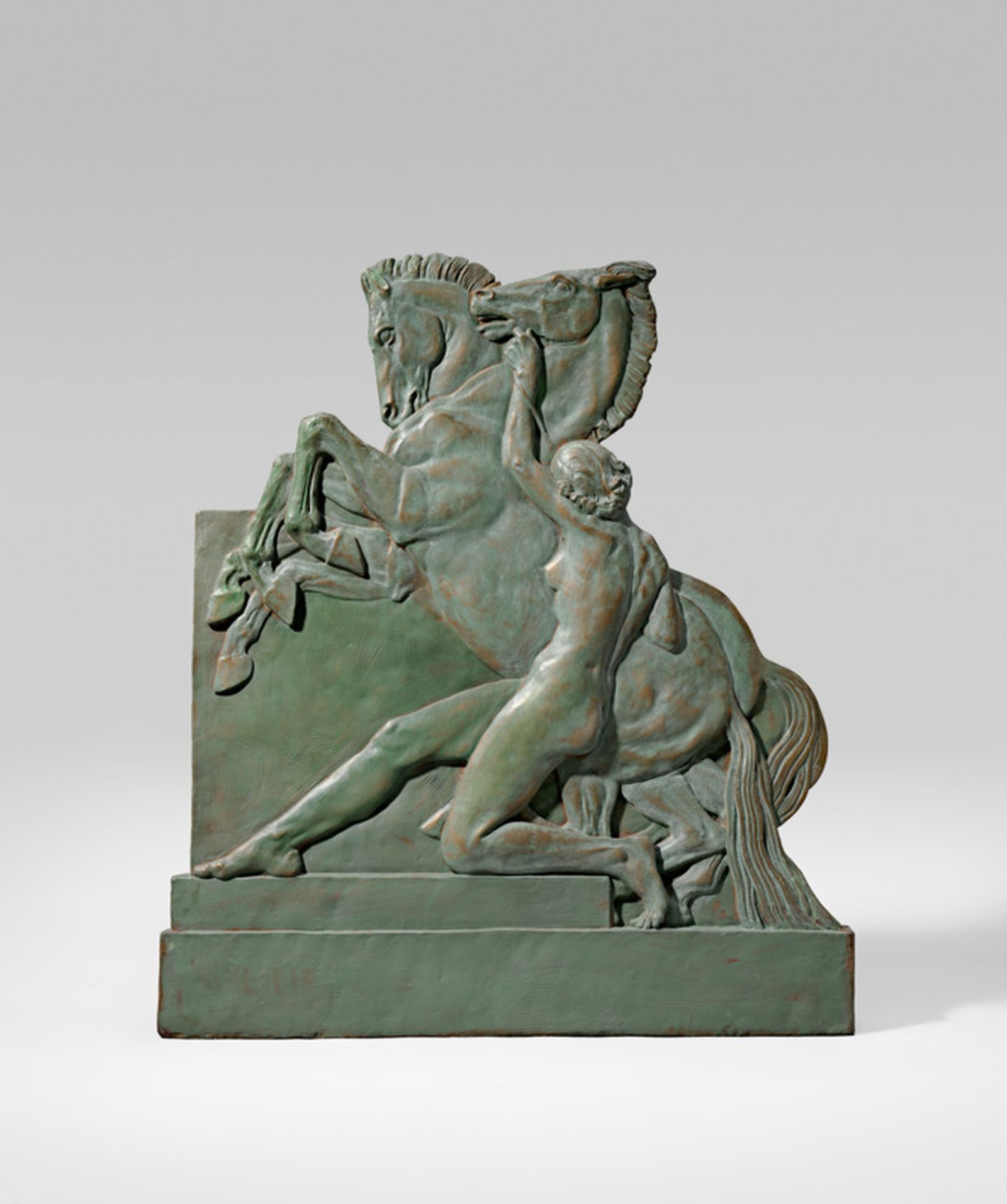Girls to the front: Jean Broome-Norton and Australian Art Deco

Jean Broome-Norton, Woman with horses, 1934, Gift of Philip Bacon AM 2003. Reproduced with permission of the artist's estate, courtesy Philip Bacon Galleries, Brisbane.
Until late in the 20th century, many Australian female artists, including sculptor Jean Broome-Norton, were not appraised in the same way as their male counterparts. Although Broome-Norton is not as well-known as some of her male peers — including her teacher, mentor and champion Rayner Hoff — a number of her key works included in the National Gallery's Art Deco exhibition reveal her as very much their equal.

Left: Rayner Hoff, Austral Pan, 1928, National Gallery of Australia, Kamberri/Canberra, purchased 1978; Centre: Jean Broome-Norton, Hippolyta and the Amazons defying Theseus, 1933, National Gallery of Australia, Kamberri/Canberra, purchased 2016 with the support of the Neilson Foundation; Right: Rayner Hoff, Deluge - stampede of the lower gods, 1927, National Gallery of Australia, Kamberri/Canberra, purchased 1968.
Positioned in front of Rayner Hoff’s huge mural Deluge — stampede of the lower gods 1927 and Napier Waller’s incredible three-panelled painting I’ll put a girdle round about the earth 1933, there is a smaller though no less arresting masterwork: Broome-Norton’s Hippolyta and the Amazons defeating Theseus 1933. Cast in bronze, this work highlights Jean Broome-Norton’s impressive skill as a sculptor.
Considered one of the artist’s most significant pieces, the sculpture depicts Hippolyta, the Queen of the Amazons, who was abducted by Perseus and forced to marry the Athenian king Theseus. While the once-indomitable heroine meets a difficult end in the annals of Greek mythology, Broome-Norton’s assertive and provocative artwork enshrines Hippolyta as a triumphant woman in charge of her destiny.
In many ways, Broome-Norton’s decision to reclaim and reposition Hippolyta’s narrative in classical mythology serves as an apt metaphor for ongoing efforts to reconsider the role of women in art history.

Jean Broome-Norton, Crawford's Casting, Abundance, 1934, National Gallery of Australia, Kamberri/Canberra, gift of Michael Ogden PSM 2016
Born in 1911, Broome-Norton studied art at the East Sydney Technical College from 1929 to 1934. As her sculptural practice evolved in the 1930s, she created stunning Vitalist works that feature powerful women as the equals of men.
In Abundance 1934, a mother stands tall in the group, her hair windswept and flowing. The man, clasping a sheaf of wheat, kneels by her side, gazing down at the cherubic boy who completes the circle with his arm gently holding his mother’s leg. Filled with symbols evoking the Australian pastoral ideal, this sculpture positions women as central to the vitality and well-being of both the family and the nation.

Jean Broome-Norton, Woman with horses, 1934, Gift of Philip Bacon AM 2003. Reproduced with permission of the artist's estate, courtesy Philip Bacon Galleries, Brisbane.
Woman with horses 1934 amplifies Broome-Norton’s vision of empowered womanhood. The artist submitted a plaster cast of the sculpture for her diploma exhibition at the National Art School and the NGA’s sculpture is one of just three bronze editions cast from this original plaster relief. Woman with horses depicts the classical form of a naked female body fearlessly wrangling two rearing steeds.
This is not the demure nude of the French Salon, but a woman of intense energy and might.
By considering the creative production of Jean Broome-Norton at a pivotal moment in Australia’s art history, it becomes clear that she must be understood as a powerful force in the artistic efforts of the era.
Art Deco is on display at the National Gallery 16 Feb 2018 — 1 Mar 2020.

